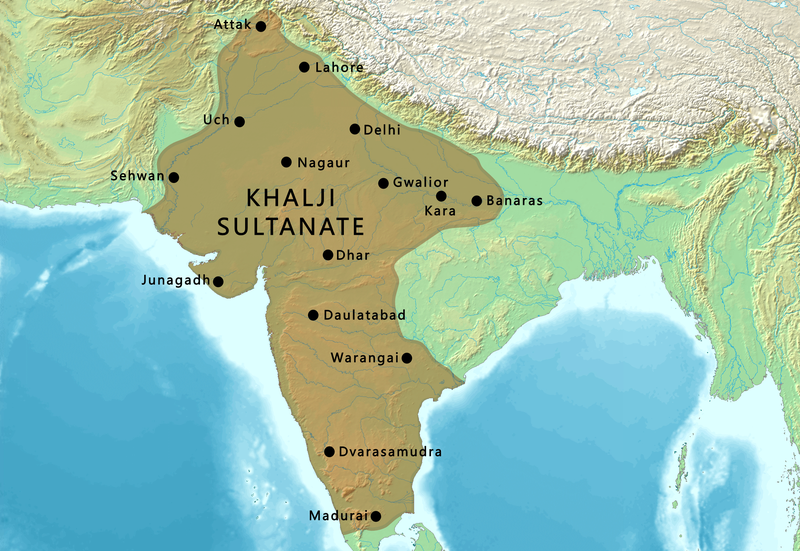He thought he was the second Great Alexander: Who is Alauddin Khalji?
Paying special attention to the state, he forbade the clergy from interfering in state affairs. He banned all drunken gatherings, especially in his own palace, and allowed marriages between nobles.

( ?-1316) Turkish sultan of Delhi. He enabled the Halac dynasty to dominate Central and Northern India. There is not much information about the early years of his life. Also known as Alaeddin Muhammed Shah. He is the nephew and son-in-law of Celaleddin Firuz Shah, the founder of the Halac dynasty. In 1292, Firuz Shah had given him the rulership of the Kara and Udh regions. To consolidate his position, he entered Malva three years later and took Bhilsa, a wealthy trading city. In 1296, he attacked the city of Devagiri in the Deccan region. He forced the defeated Hindu raja to make a treaty with very harsh conditions. Since he was the first Muslim ruler to enter the Deccan region, this event is considered one of the most important events in the history of medieval India.
Alaud-Dīn Khaljī, also called Alauddin Khilji, born Ali Gurshasp, was a ruler from the Khalji dynasty that ruled the Delhi Sultanate in the Indian subcontinent. Alauddin instituted a number of significant administrative changes, related to revenues, price controls, and society. He also successfully fended off several Mongol invasions of India.
He took the throne of Delhi in 1296 after he had Celaleddin Firuz Shah, who came to meet him, killed. For the next fifteen years, it expanded its borders with constant wars. In 1303, the Northwest Hindu kingdoms of Gujarat, Rantambor, Chitor, and Rajasthan took control. The northwest border was strengthened to prevent the Mongols from spreading. In 1305, when Malva, Ucceyn, Chanderi, and Mandavar in central India were also under his rule, he conquered all of Northern India. Two years later, his campaign against Devagiri finally reached Cape Camiron, in the southernmost part of India. In 1311, Delhi became the richest sultan in its history. All of northern and central India, from Multan, Lahore, and Delhi in the north, Dvasamudra in the south, Lahnanti and Sonargaan in the east, and Thatta and Gujarat in the west, were within the borders of the Delhi Sultanate.
The Delhi Sultanate, or the Sultanate of Delhi, was a Muslim empire based in Delhi that stretched over large parts of the Indian subcontinent during the period of Medieval India, for 320 years (1206–1526).
Alaeddin Halacî has an important place among the medieval Turkish rulers. He succeeded in establishing a great empire and made many new arrangements. Gathering all the power in his hands, he resorted to every means to expand his empire.
Paying special attention to the state, he forbade the clergy from interfering in state affairs. He established a strong central government and a regular army, controlling the independent kings in the far-flung regions of the vast empire. He created a very widespread secret intelligence organization. He nationalized some of the lands and foundations in order to prevent the accumulation of great wealth in the hands of individuals. By applying a new tax system, he ensured that taxes were collected by the same methods everywhere. He banned all drunken gatherings, especially in his own palace, and allowed marriages between nobles. By controlling the prices of necessities, the corruption of the merchants was prevented. He imposed heavy taxes on Hindus, especially the wealthy and landowning segments, and deprived them of their right to ride horses and carry weapons. But large strata of the population, especially Indian Muslims, were content with his rule. As a result of the economic measures he implemented, his living conditions improved and his standard of living increased.
His rule caused the discontent of the rich and privileged. Alaeddin chooses the statesmen from the lower classes and captives in order to bind them to him; This led to the humiliation of the rulers by the wealthy. He had given the highest duties of the state to his slave Kafur, and at his will, he had chosen his younger son, Sehabeddin Ömer, who was five or six years old, instead of his eldest son, Hızır Han, as heir. The state founded by Alaeddin was largely dependent on his personality. Only four years after his death, the Khalaji dynasty came to an end and the Delhi Sultanate passed into the hands of the Tuglukshahs.
As a result of his military power and great wealth, Alaeddin identified himself with Alexander the Great and even minted money with the name of Alexander II. He aimed to establish a new religion, but could not realize this desire. He gave importance to cultural and architectural activities and built castles, cisterns, and palaces. During his reign, many scientists and artists from Arab countries and Central Asia settled in Delhi, and Delhi became the scientific and cultural center of the Muslim East.
